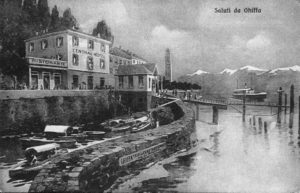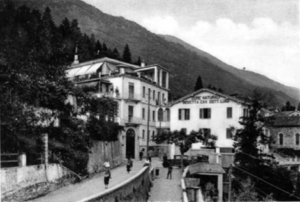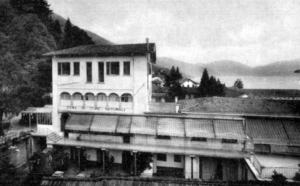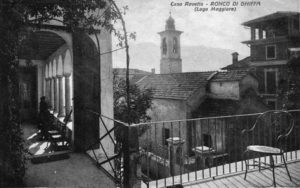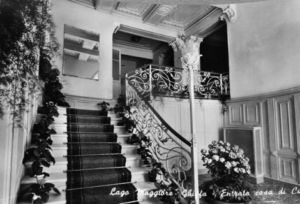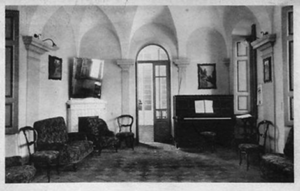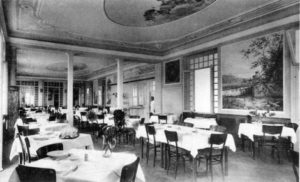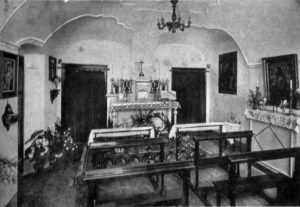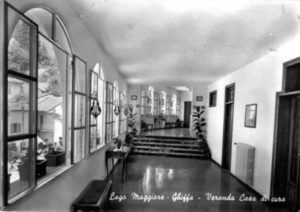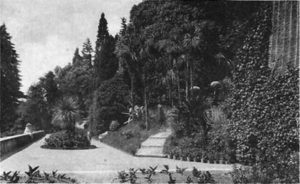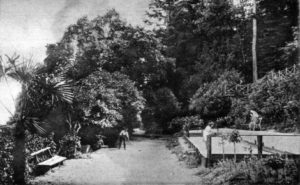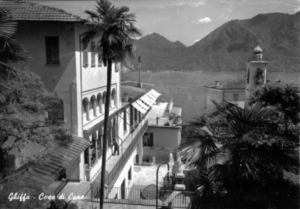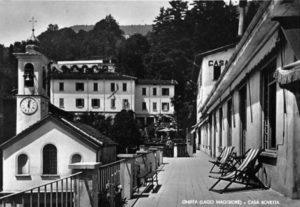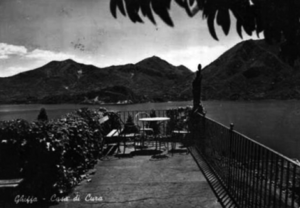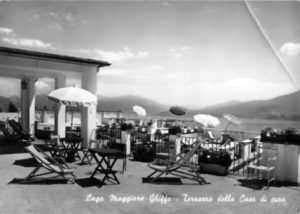Dr. Luigi Rovetta was a theorist of scientific naturism. In 1920 he founded in Ronco di Ghiffa, in a property with a park belonging to counts Morocco, a special place, the Casa di cure naturali Dr. Luigi Rovetta. There, patients could recover in a pristine landscape and re-establish the right balance between body and environment. The resort, that included more than eighty rooms with running water, was made up of a building dedicated to the cures and provided with modern equipment. The tonic therapy was based on the administration of special herbal teas, helio- and hydrotherapy, gymnastics, mud baths as well as on a proper diet.
The guest rooms were located upstairs. Above the windows and on the ceiling, natural scenes were painted, with landscapes depicting the lake, the countryside and a blooming pergola. The guest apartments were furnished in a floral design, according to the style of that period.
The park surrounding the building stretched about four hectares as far as the slopes of the Sacro Monte of Ghiffa. From the building, a stunning view of the lake could be enjoyed. Cycling champion Fausto Coppi and boxer Primo Carrera were guests of Dr. Rovetta.
Besides concrete practice, the physician was also the author of several publications. As early as in 1920 he printed with publisher Almasio in Intra his Vademecum per attuare a domicilio la cura depurativa e ricostituente della casa di cure naturali Dr. Luigi Rovetta (Handbook to carry out the detox and tonic treatments of the Casa di cure naturali Dr. Luigi Rovetta at home) and from 1926 he published the monthly “Natura e scienza per la salute” (Nature and science for health) and “Rivista bimestrale della casa di cure” (Two-monthly magazine of the resort). In 1940 Dr. Rovetta also wrote Verso il naturismo scientifico (Towards scientific naturism) for publisher Airoldi, in which he described all the treatments, followed in 1944 by Naturismo: cure naturali (Naturism: natural treatments), again with Airoldi.
Both books showed the multiple practical possibilities offered by natural treatments. Rovetta’s theories were innovative ones and were also studied by his contemporary colleagues. Medicine, hygiene and nutrition were the mainstays of naturism, a school of thought that was already widespread in the 18th century. According to Belgian physician Jean Baptiste Luc Planchon, who published in 1778 his book Le Naturisme ou la nature considérée dans les maladies et leur traitement conforme à la doctrine et à la pratique d’Hippocrate et ses sectateurs, naturism was a doctrine that lets nature act instead of intervening artificially. “Nature” was that of man, which is able to cure a sick body.
By the middle of last century, the property was sold to Stock, that kept it closed and neglected it until the hotel constraint expired.
Texts and images from: “Fra tisane e SS. La storia della casa di cura Rovetta a Ghiffa”
Courtesy of the Iconographic Archive of Verbano Cusio Ossola


